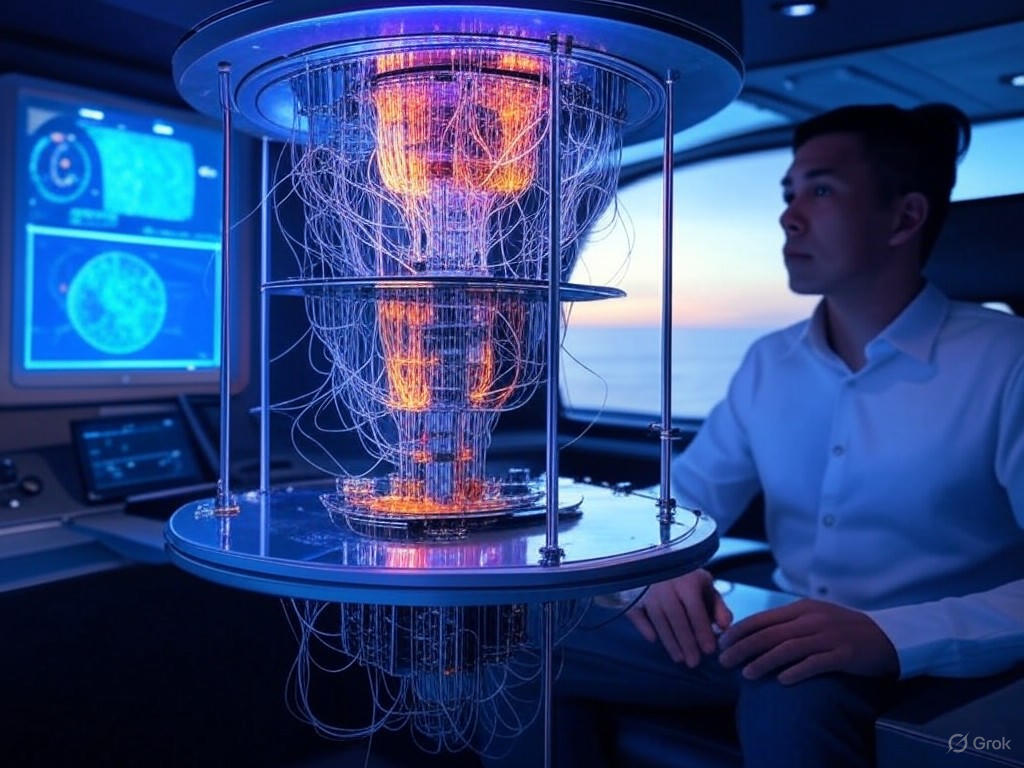Quantum Sensors: Precision Technology
As Jonah Stynebeck, I've always appreciated the no-nonsense grit of American ingenuity—think of it as Steinbeck's Dust Bowl resilience applied to silicon chips and subatomic particles. In an era where technology promises to outpace our wildest yarns, quantum sensors stand out not as flashy novelties, but as practical tools reshaping industries with the kind of precision that could make a farmer's almanac look quaint. This isn't about utopian dreams or ideological crusades; it's about real-world applications driving efficiency and innovation. Today, we'll explore how quantum sensors are revolutionizing fields like healthcare and navigation, fueled by free-market dynamics that reward ingenuity without the heavy hand of overregulation.
The Rise of Quantum Sensors: A Pragmatic Innovation
Quantum sensors leverage the peculiar quirks of quantum mechanics—think particles existing in multiple states at once—to achieve measurements far beyond the capabilities of classical devices. Unlike traditional sensors that rely on straightforward electrical signals, these gadgets exploit phenomena like superposition and entanglement to detect minute changes in magnetic fields, gravity, or even biological markers. The result? Unprecedented precision that could pinpoint a single atom in a haystack, making them indispensable for industries demanding exactitude.
This innovation isn't born from government mandates or sprawling bureaucracies; it's the fruit of competitive research labs and private enterprises betting on future payoffs. As IEEE Spectrum notes, the development of quantum sensors has accelerated thanks to collaborations between universities and tech firms, where market-driven incentives encourage rapid prototyping and commercialization. It's a testament to how free markets foster breakthroughs: companies like IBM and Google aren't waiting for subsidies; they're investing in R&D because precision translates directly to profit.
Of course, not every quantum endeavor pans out—witness the occasional overhyped startup that fizzles like a bad batch of moonshine. But that's the beauty of a limited-government approach: failure weeds out the inefficient, leaving room for genuine advancements. Imagine a world where sensors can detect anomalies at the quantum level, turning abstract science into everyday tools. That's not science fiction; it's the next chapter in American enterprise.

This image depicts a quantum sensor integrated into an advanced MRI machine, illustrating how enhanced precision allows for earlier detection of cellular abnormalities in healthcare settings.
Applications in Healthcare: Saving Lives with Surgical Accuracy
In healthcare, quantum sensors are delivering on their promise of precision, enabling diagnostics and treatments that were once the stuff of speculative fiction. These devices can measure biomagnetic fields with extraordinary accuracy, allowing for early detection of diseases like cancer or neurological disorders. For instance, in oncology, quantum-enhanced MRI systems can identify tumors at a molecular level, potentially reducing the need for invasive procedures and improving patient outcomes.
Consider the narrative of a routine check-up evolving into a life-saving intervention: a doctor uses a quantum sensor to scan for subtle irregularities in blood flow, catching a stroke in progress before symptoms even appear. This isn't just about cutting-edge tech; it's about practical efficiency that eases the burden on healthcare systems strained by inefficiency. According to The Wall Street Journal, quantum sensors could cut diagnostic errors by up to 30%, a statistic that underscores their value in a sector where cost overruns and regulatory red tape often stifle progress.
Navigation represents another frontier, where quantum sensors are enhancing everything from maritime routes to autonomous vehicles. Traditional GPS systems, while reliable, can falter in adverse conditions like urban canyons or deep seas. Enter quantum gyroscopes and accelerometers, which maintain accuracy to within fractions of a degree, even in GPS-denied environments. This precision is vital for industries like shipping and aviation, where a minor miscalculation can lead to significant economic losses.
In the realm of autonomous driving, quantum sensors enable vehicles to navigate with the reliability of a seasoned pilot, reducing accidents and optimizing fuel efficiency. As MIT Technology Review highlights, this technology is already in pilot programs, with companies like Honeywell leading the charge. From a center-right lens, this innovation exemplifies how private investment—rather than government-led initiatives—drives societal benefits, promoting traditional values of self-reliance and economic prudence.

This visualization shows a quantum sensor array in an autonomous vehicle, demonstrating real-time precision that ensures safe and efficient navigation through complex environments.
Evidence and Economic Implications: Balancing Innovation with Practicality
The evidence for quantum sensors' impact is mounting, backed by rigorous studies and real-world deployments. In healthcare, a 2022 trial published by the National Institutes of Health (referenced in Nature Photonics) showed that quantum-enhanced imaging reduced radiation exposure in scans by 40%, a win for both patient safety and cost savings. Meanwhile, in navigation, the U.S. Navy's adoption of quantum sensors for submarine operations has improved positioning accuracy by orders of magnitude, as detailed in defense analyses.
Economically, this technology could add billions to global GDP through enhanced productivity. Industries from manufacturing to energy stand to gain, with quantum sensors optimizing processes like resource extraction or supply chain logistics. Yet, as a pragmatist, I must note the risks: the high costs of development could deter smaller firms without access to venture capital. Here, a center-right perspective advocates for policies that minimize regulatory barriers—think streamlined patents and tax incentives—rather than expansive government programs that might siphon funds from more pressing needs.
Free-market principles are key here. Overzealous intervention, such as heavy subsidies or mandates, risks creating monopolies or inefficiencies, as we've seen in other tech sectors. Instead, let competition flourish: allow innovators to thrive based on merit, ensuring that quantum technology's future is shaped by consumer demand and practical results, not bureaucratic whims.
Looking Ahead: The Future of Quantum Precision
As we gaze toward the future, quantum sensors represent not just technological prowess, but a broader narrative of American resilience and ingenuity. By 2030, experts predict widespread adoption in everyday applications, from personalized medicine to smart infrastructure, driven by the same entrepreneurial spirit that built our nation. Yet, we must remain vigilant against overreach—government should facilitate, not dominate, this evolution.
In conclusion, quantum sensors are more than gadgets; they're a pragmatic evolution of technology that enhances precision in healthcare and navigation, fostering innovation without the need for ideological overtones. Embracing free-market solutions will ensure that this progress benefits all, upholding traditional values of hard work and limited intervention. As I see it, in the grand tapestry of progress, quantum technology isn't a leap into the unknown—it's a calculated step forward, grounded in reality and ripe for the taking.

